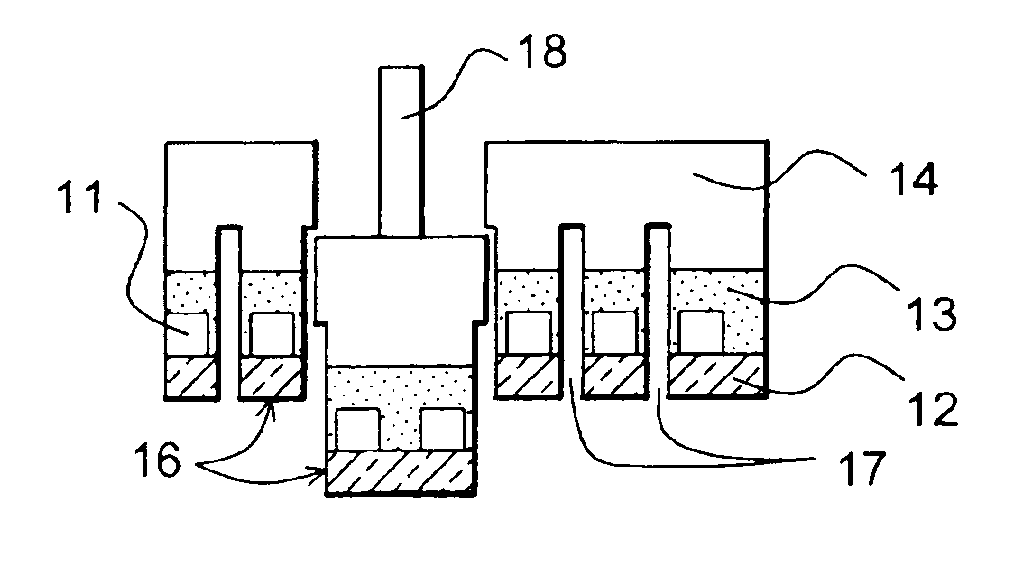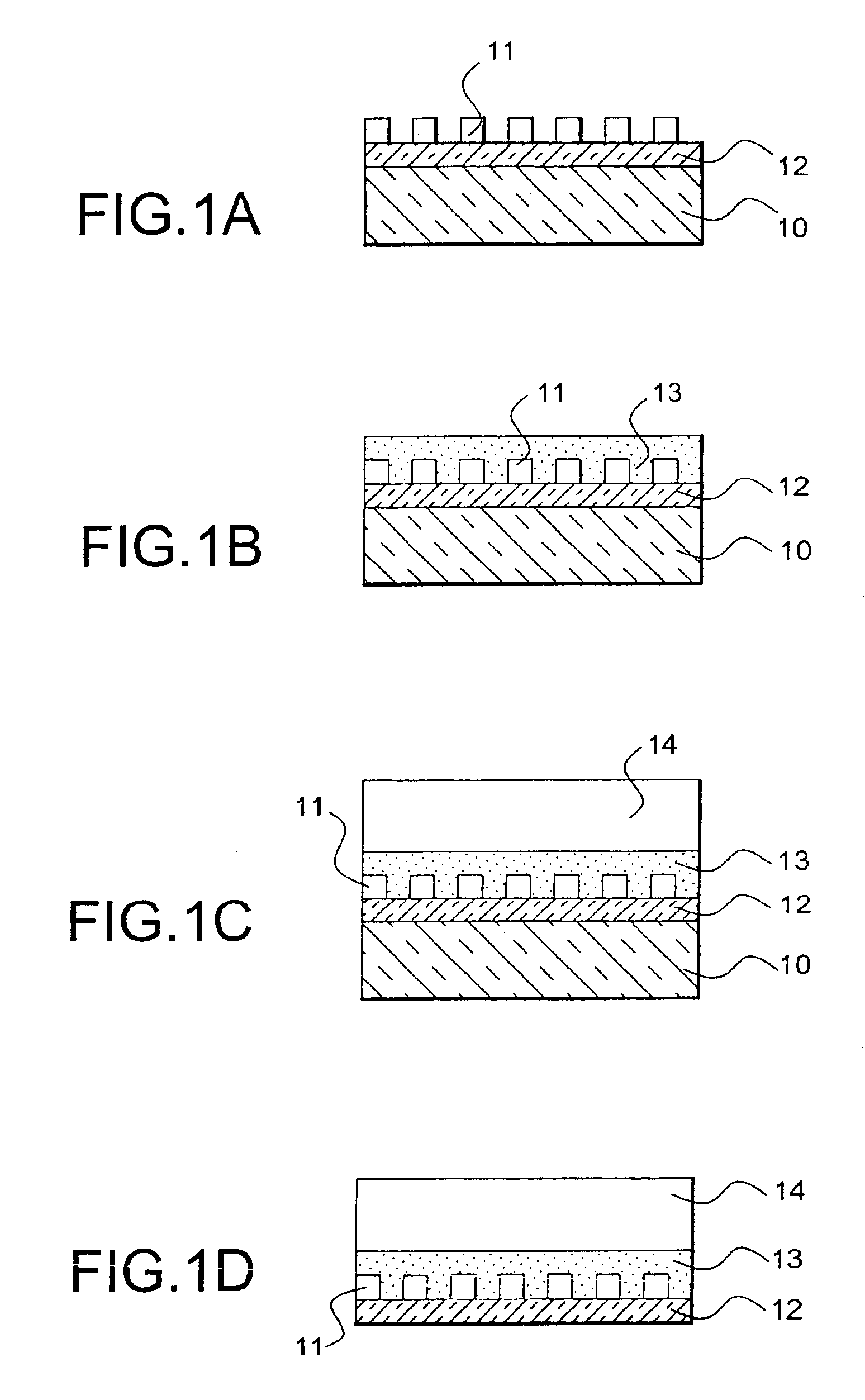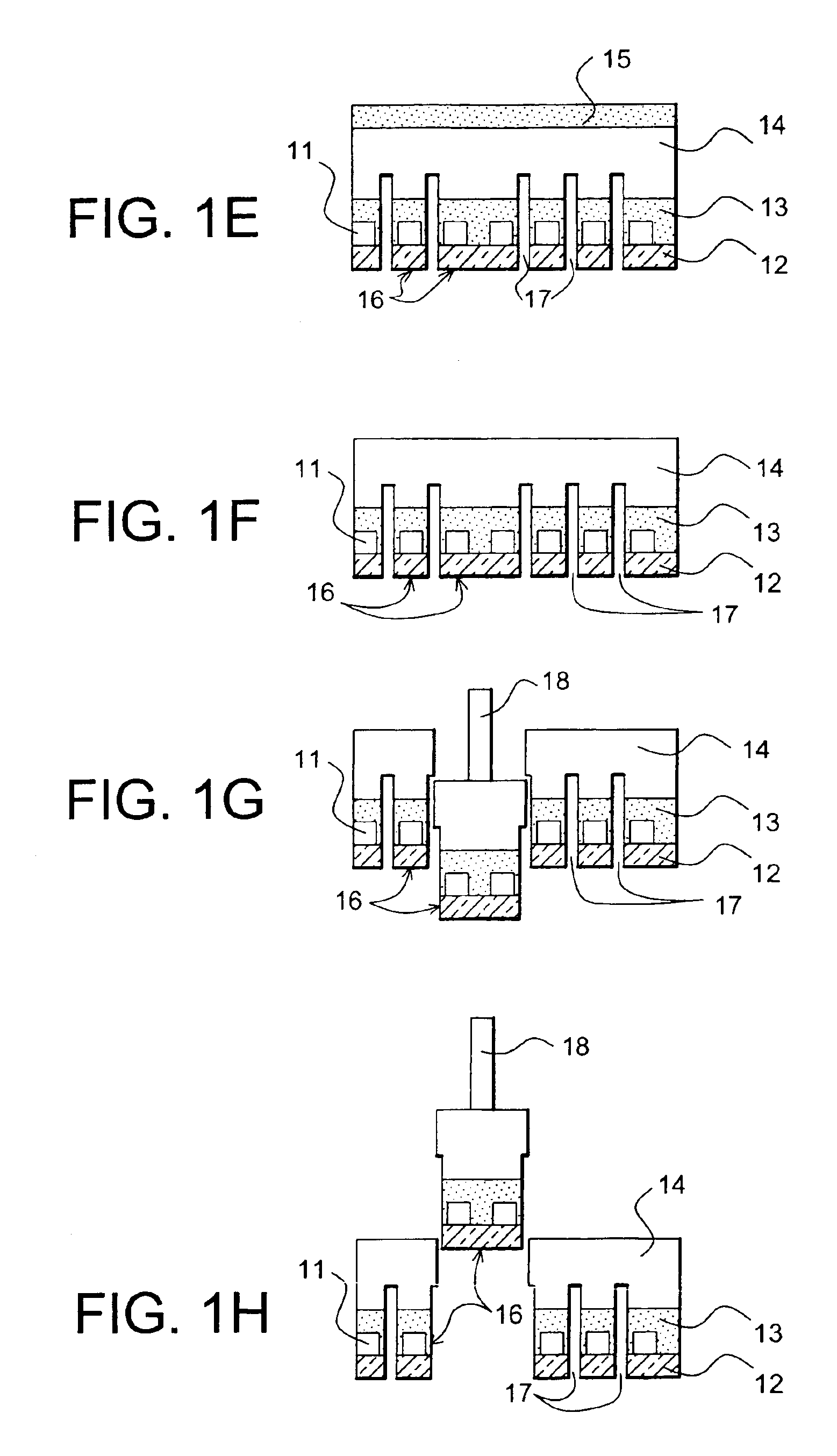Method for selectively transferring at least an element from an initial support onto a final support
a technology of at least an element and a final support, applied in the direction of lasers, semiconductor laser structural details, sensors of record carriers, etc., can solve the problems of inability to make components on plastic supports, inability to achieve the growth of components with a great difference in link parameters (several hundred), and inability to use micro-electronic processes to make components. , to achieve the effect of limiting the losses of starting materials, and reducing the weight of these components
- Summary
- Abstract
- Description
- Claims
- Application Information
AI Technical Summary
Benefits of technology
Problems solved by technology
Method used
Image
Examples
Embodiment Construction
[0055]Generally speaking, the process applies to elements fully or partially made on substrates by the techniques of microelectronics and / or optoelectronics. The elements can possibly be made on one or several layers of chemical stoppage. They can possibly be subjected to an electric test on their initial support.
[0056]In case there exists a strong surface topology, a polishing of the surface can be carried out by the deposit of material followed by a chemical-mechanical polishing or by filling the volumes with a material sufficiently smooth that does not require any subsequent polishing. If the layer of filling material is sufficiently thick and rigid, it can also fulfil a function of rigidification and make up the transfer support. In addition, it can, when necessary, fulfil an adhesion function.
[0057]Different techniques can be used to fix the transfer support on the initial support: molecular adhesion, glue, epoxy resin, etc. The molecular adhesion is particularly appropriate wh...
PUM
 Login to View More
Login to View More Abstract
Description
Claims
Application Information
 Login to View More
Login to View More - R&D
- Intellectual Property
- Life Sciences
- Materials
- Tech Scout
- Unparalleled Data Quality
- Higher Quality Content
- 60% Fewer Hallucinations
Browse by: Latest US Patents, China's latest patents, Technical Efficacy Thesaurus, Application Domain, Technology Topic, Popular Technical Reports.
© 2025 PatSnap. All rights reserved.Legal|Privacy policy|Modern Slavery Act Transparency Statement|Sitemap|About US| Contact US: help@patsnap.com



